Venturing onto the frozen expanses of Michigan’s lakes and rivers in winter can be an exhilarating experience. Yet, it carries inherent risks, the most daunting of which is the possibility of falling through ice. Understanding what to do in a life-threatening situation can be the difference between life and death.
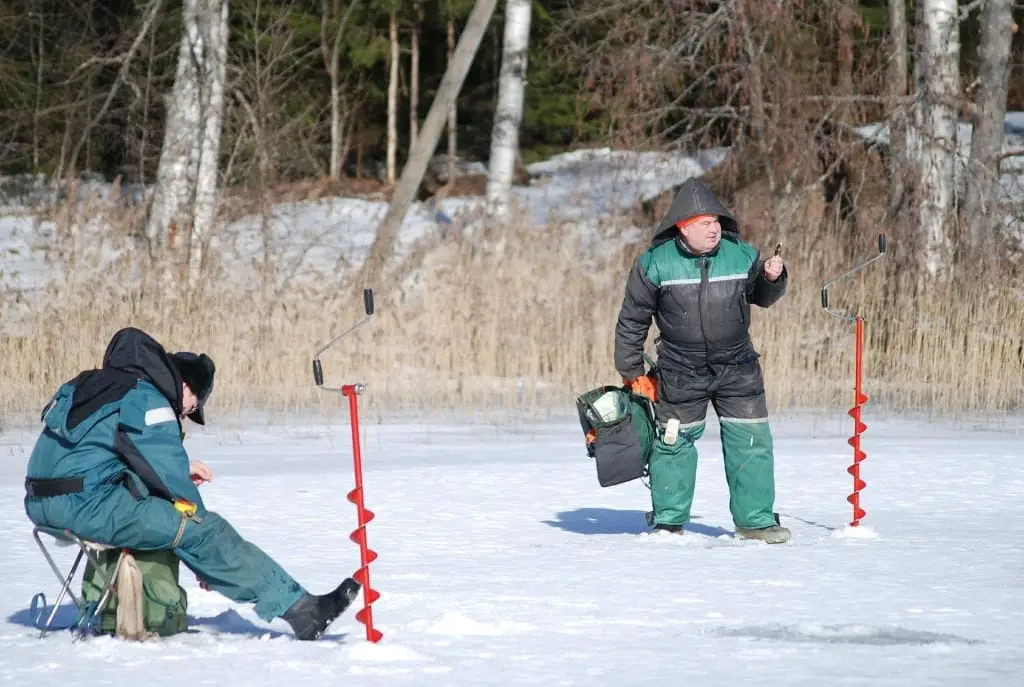
This guide is intended not just for the winter sports enthusiast but for anyone who finds themselves traversing icy terrains. Here, we delve into vital survival tips, the latest safety protocols, and practical advice on how to act swiftly and effectively if you ever find yourself in the chilling grasp of icy waters. Whether you’re an ice fisher, a casual hiker, or simply curious, these insights could one day save a life – perhaps even your own.
Table of Contents
How Many People In Michigan Die Each Year By Falling Through Ice?
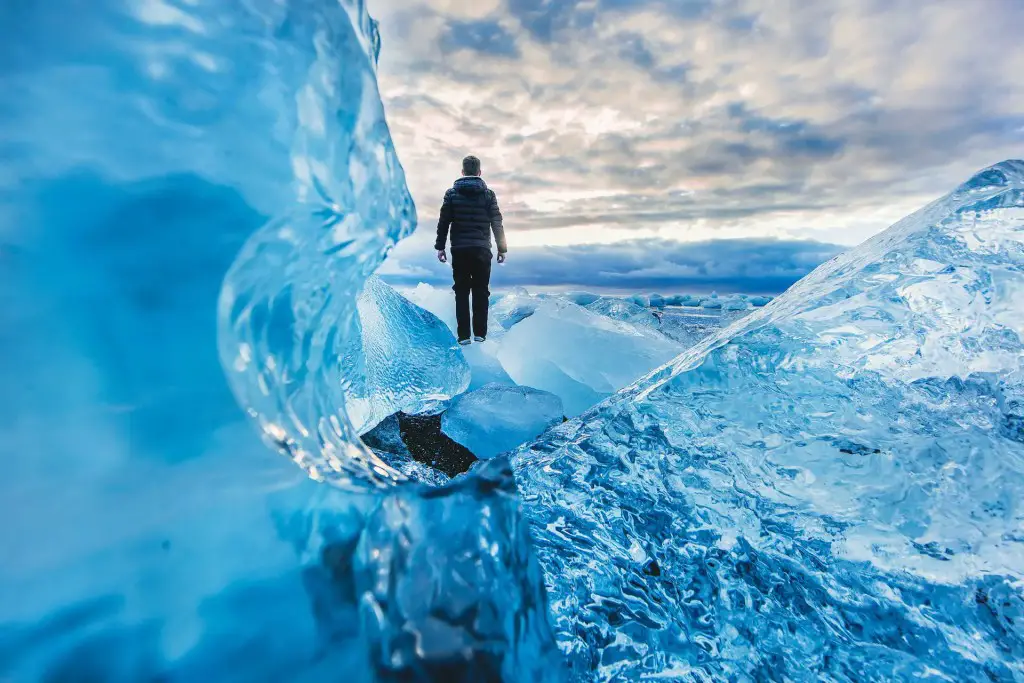
We could not find an authoritative source for the total deaths from falling through the ice in Michigan. With thousands of inland lakes, local police departments do not report to the state when a person has died on the ice. One source, The Great Lakes Surf Rescue Project, reports fatalities for all of the Great Lakes.
Recent Michigan Ice-Related Deaths
15-year-old Paul Sanders of Southfield died on January 4, 2023, at Ann Arbor Hospital after a dive team pulled him from a gravel pit.
A 73-year-old man was found dead after the utility task vehicle he was on fell through the ice on a lake in Arenac County. The accident happened in February 2023 on Forest Lake near South Forest Lake Drive in Moffatt Township. Investigators say the UTV was driving across the lake when it broke through the ice.
In 2021, a 26-year-old man died after falling through ice on a Michigan lake. Wixom resident had been riding his snowmobile on Wolverine Lake when it broke through the ice into an open water area. A 22-year-old man died after he and three others fell through the ice on Durfee Lake in western Lenawee County in February.
In January 2021, Edward Carl Lester, a 64-year-old man from Garden Township, Michigan, drowned in an ice fishing accident on Lake Michigan. When he failed to return from his routine fishing trip, his wife contacted a neighbor who spotted a body floating in the water near a pressure crack in the ice. Authorities were alerted and first responders were able to recover Lester’s body. It is believed that he was operating his off-road vehicle on the ice when he navigated into the open water, causing his vehicle to sink.
On February 25, 2020, a 30-year-old man named Ramal Roby from Muskegon Heights, Michigan, is believed to have drowned after walking onto unstable ice near the city’s water filtration plant. Despite parking their car at a road-closed barricade, Roby and a woman ventured out onto the ice, but Roby did not return. His body was recovered a month later, on March 26, 2020, and his death was ruled as an accidental drowning.
In 2019, 65 people died in 54 accidents after falling through ice on the Great Lakes. Nine of those fatalities were from Michigan. This was higher than the number of annual fatalities since 2013. Ten of the deaths were double fatalities, and one resulted in the deaths of three people.
In the winter of 2018, there were two deaths and one rescue on the Saginaw Bay ice in the Upper Thumb in early February. We found a short video that describes the steps to survive falling through ice even if you can’t get yourself out of the water. It’s a fight for survival, and one only has minutes before hypothermia, unconsciousness, and death.
Survive Falling Through Ice With A Snowmobile
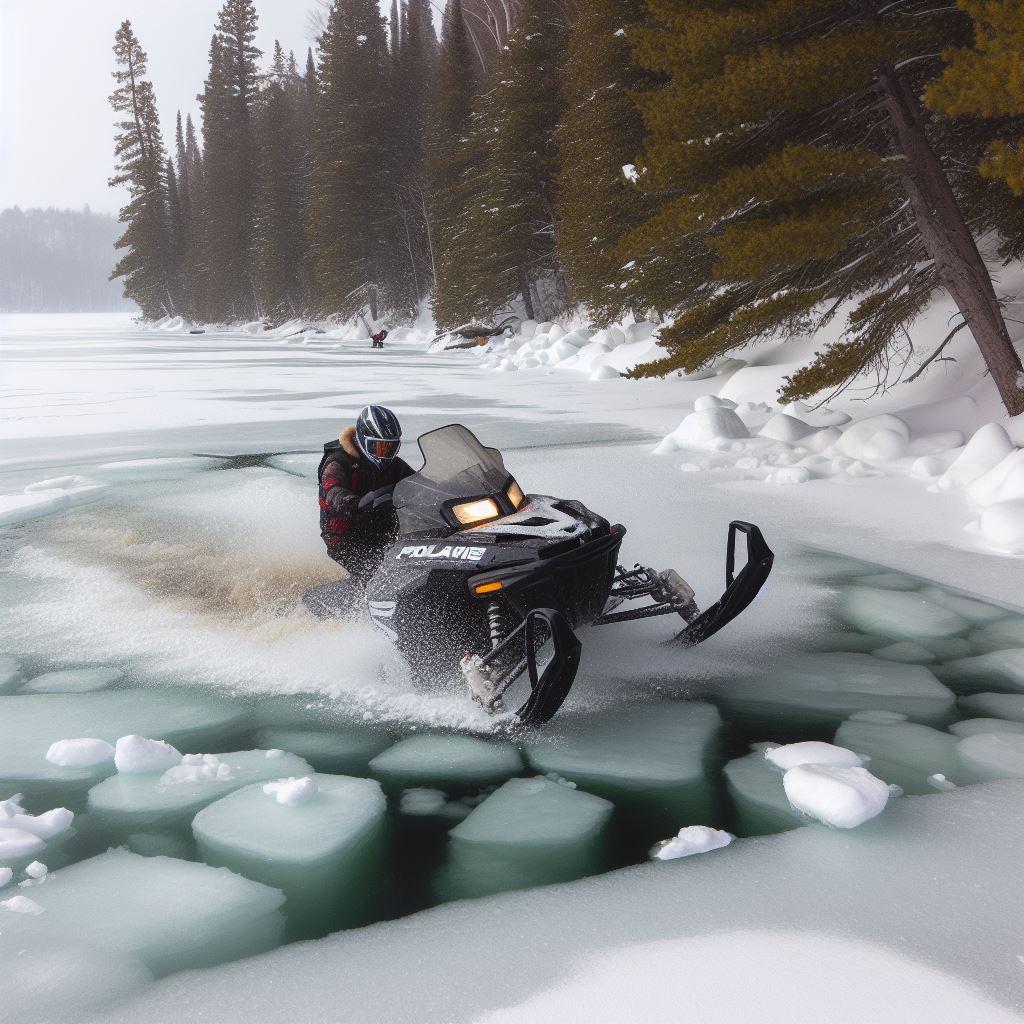
If you ever find yourself in the harrowing situation of falling through ice with a snowmobile, survival is possible with the proper knowledge and quick thinking. As soon as you realize you’re breaking through the ice, try to jump off the snowmobile to distribute your weight more broadly and reduce your chance of sinking.
If you do fall into the freezing water, don’t panic. Stay calm, and try to turn towards the direction you came from, as the ice there is likely to be more solid. Use any sharp object or even your bare hands to claw and pull yourself up onto solid ice once you’re out of the water; roll or crawl to distribute your weight and prevent the ice from breaking again. It’s crucial to get warm quickly to prevent hypothermia. This scenario is extremely dangerous and should be avoided at all costs, but knowing what to do may save your life.
Falling Through Ice In A Car or Truck
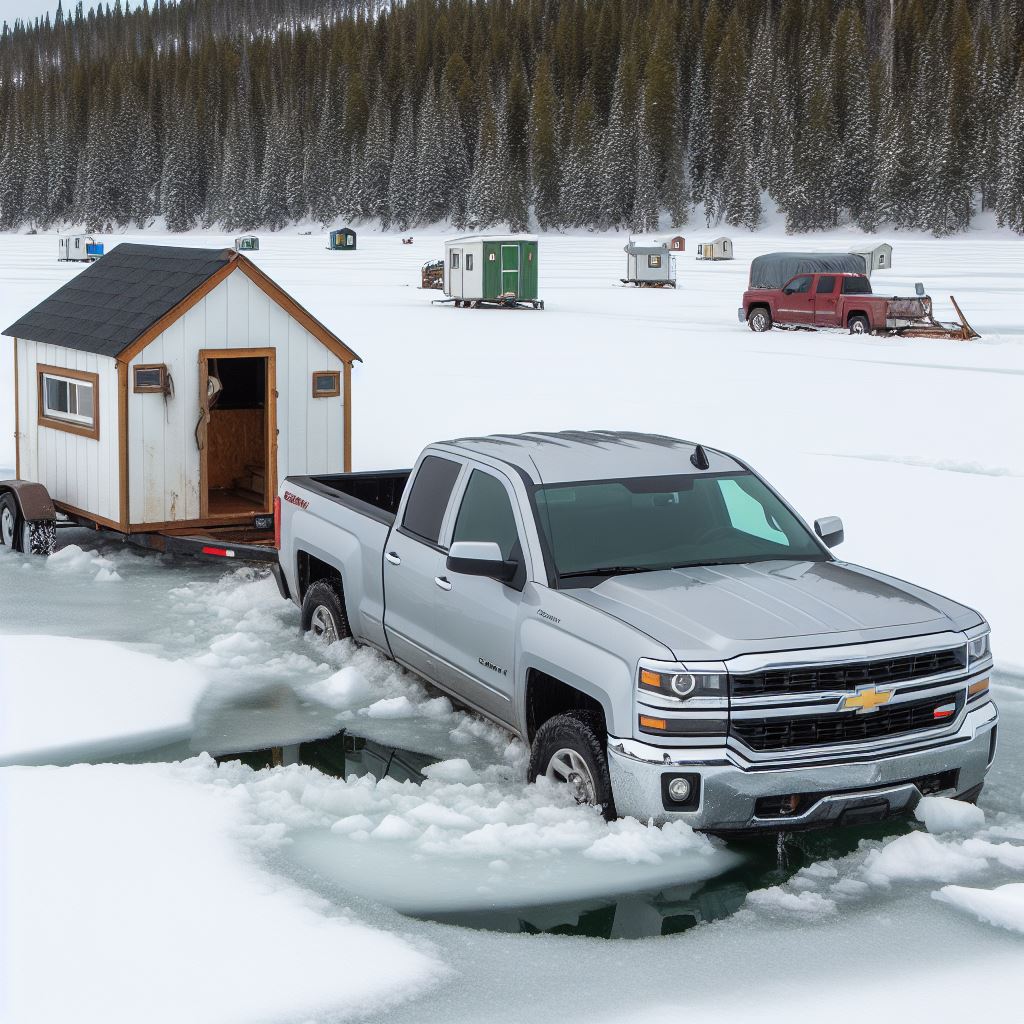
Falling through ice in a car or truck is a hazardous and life-threatening situation that often occurs during winter when people attempt to drive over frozen bodies of water. The vehicle’s weight can cause the ice to crack and give way, plunging the car or truck into freezing water. The rapid influx of cold water can cause the vehicle to sink quickly, trapping the occupants inside. It’s a hazardous scenario that involves a high risk of hypothermia, drowning, and potential injury from the impact of the crash. This is why it’s crucial to exercise extreme caution on icy roads and avoid driving on frozen lakes or rivers altogether.
What To Do If You Fall Through Ice
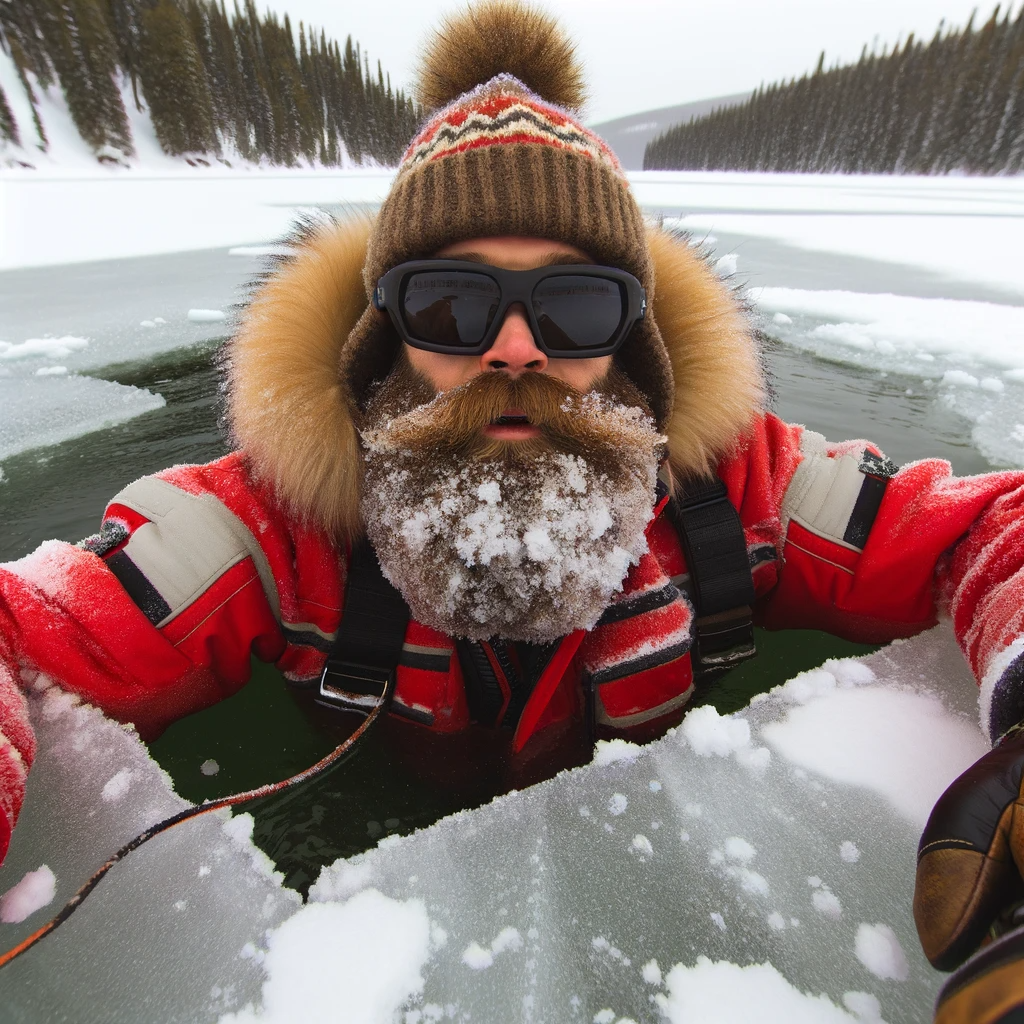
Falling through ice into cold water triggers an immediate and intense response known as the cold shock response. This initial reaction usually occurs within the first few minutes of immersion and is marked by an involuntary gasp, followed by rapid, uncontrolled breathing (hyperventilation). This can increase the risk of drowning, especially if the person’s head is underwater. Additionally, the sudden cold can cause disorientation and panic, making it difficult to think clearly or focus on escaping from the water.
The physical effects of the cold water are quickly felt as the skin and extremities begin to cool rapidly, leading to numbness. This makes movement, especially swimming or pulling oneself out of the water, increasingly difficult. As exposure to the cold water continues, the body redirects blood flow from the extremities to the core to maintain core body temperature, a process that can lead to muscle weakness and incapacitation, known as cold incapacitation. This reduces the effectiveness of the person’s movements and complicates self-rescue efforts.
If the individual remains in the water, the continued loss of body heat can lead to hypothermia. Initial stages include shivering, followed by more severe symptoms like slurred speech, confusion, and lethargy if the exposure is prolonged. The best immediate response is to try to control breathing, avoid panic, and focus on getting out of the water as quickly as possible, ideally using the ice where one initially fell in, as this area is likely stronger.
Importance of Clothes:
While in the water, you must not strip off your clothing. Contrary to what some might think, clothes are beneficial as they help retain body heat and can aid in floating
Horizontal Position and Rolling
Once you’ve got your head above the water, the next step is to orient your body horizontally. Pulling yourself onto the ice, particularly in the direction from which you fell, is crucial. Once out, avoid standing immediately; roll over the ice to distribute your weight more evenly.
How To Survive Falling Through Ice
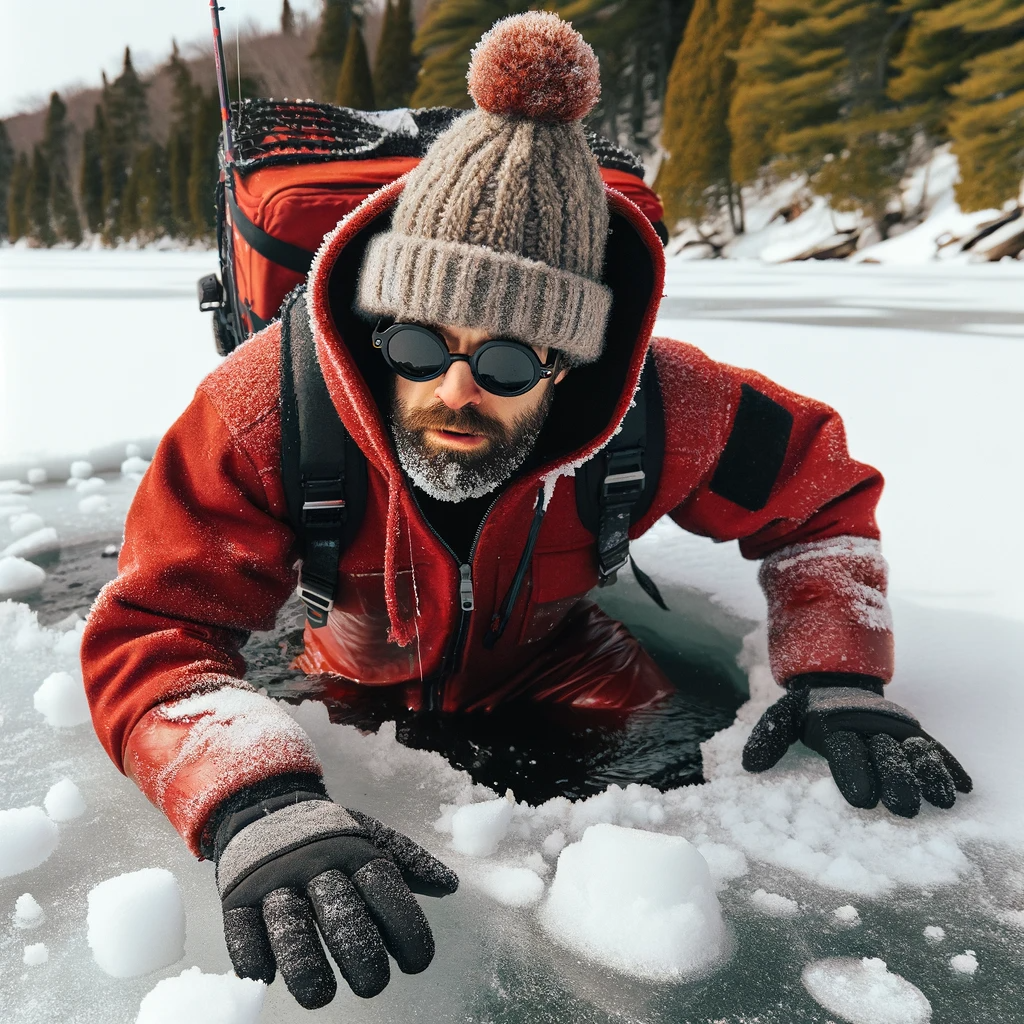
The 1-10-1 Principle
This principle outlines the stages the body goes through upon entering cold water: 1 minute of cold shock, 10 minutes of meaningful movement, and 1 hour until hypothermia sets in. Gaining control of your breathing and keeping your head above water during the first minute is crucial.
Getting Out of Icy Water
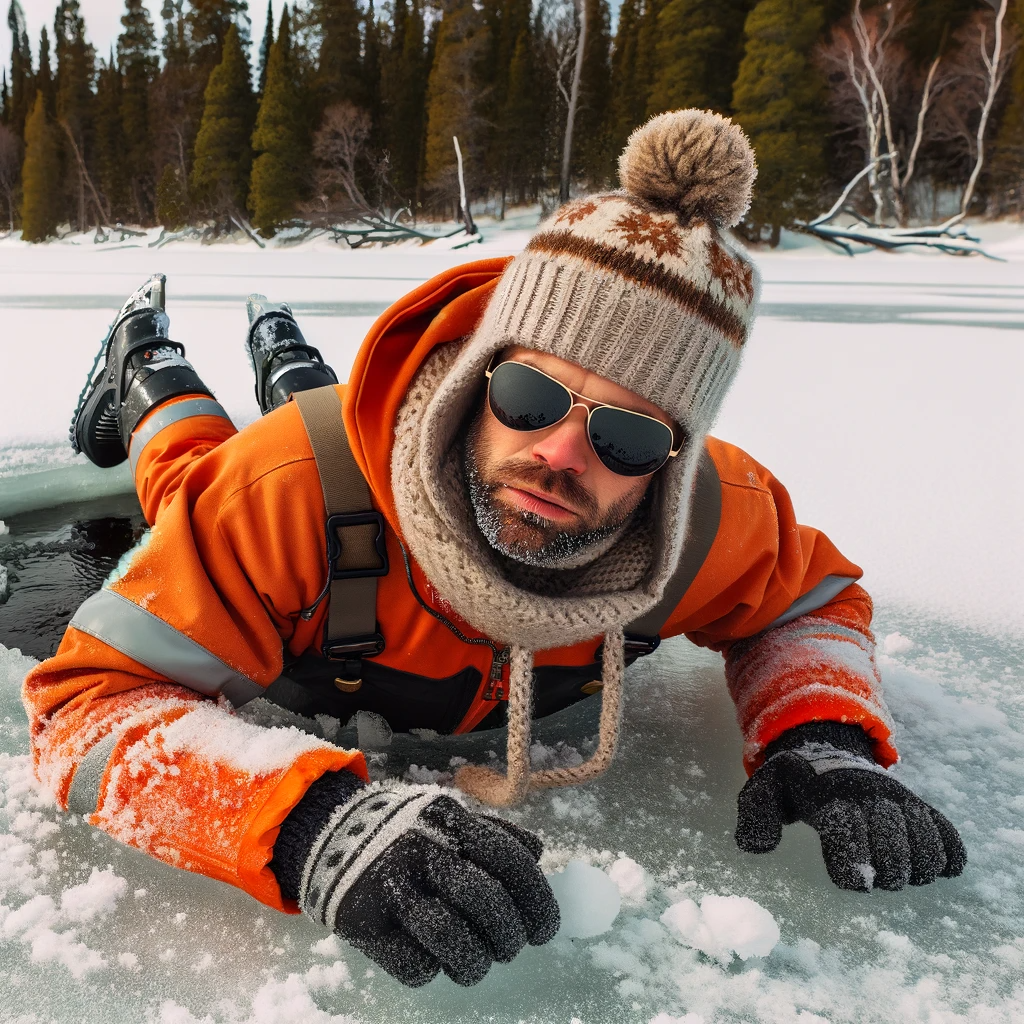
If you fall through the ice your body will immediately be shocked due to the extreme cold. The icy water may knock your breath out. Try to avoid panic and not thrash around. Once you catch your breath, you will calm down. However, you will still have to act immediately. Don’t remove any clothing. It will not weigh you down that much. It will have trapped air in it to help you stay afloat.
The next step is to get to the edge of the site where you fell in. Chances are it offers the strongest ice in which to get out. Place both hands on the solid ice. If you have something sharp, like a knife or even a pen, use it. Kick your legs to slowly push you up horizontally and a bit off the ice. Keep working yourself up on your elbows. This will allow water to drain off you and lighten your weight. Keep sliding up on the ice and lay flat to distribute your weight. This will make it less likely that the ice will break under you. Once out of the water, start rolling away from the hole. Once clear of the thin ice. Get to a warm spot and dry off immediately.
How To Warm Up After Falling Through Ice

Avoiding Immediate Warmth: If you get out of the water by yourself or are rescued, it’s important to avoid immediate exposure to intense heat, such as a fire. This can lead to rapid blood circulation of cold blood, increasing the risk of hypothermia. Instead, find a warm, dry location, remove wet clothing, and wrap up in a blanket. Drink warm water, or coffee in small sips.
Ice Safety Guidelines
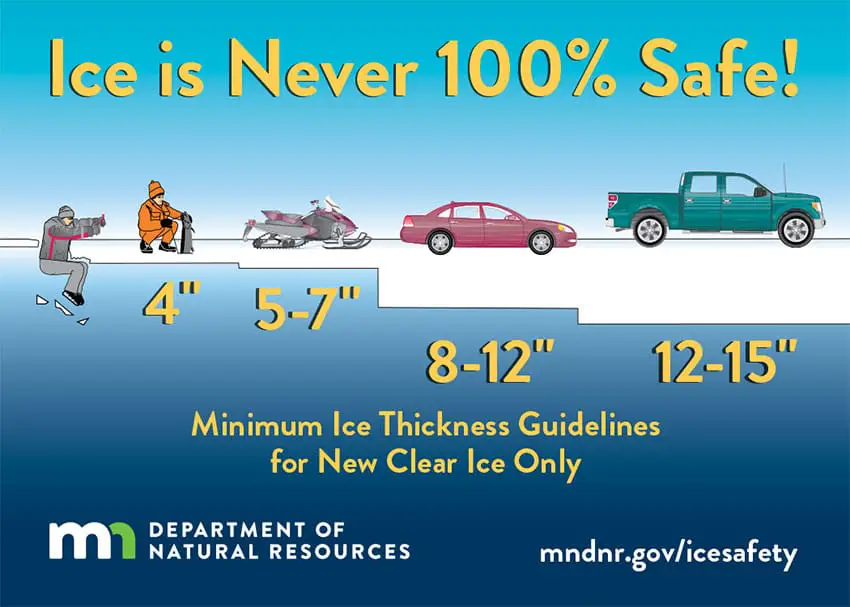
The Minnesota Department of Natural Resources provides guidelines for walking, fishing, snowmobiling, or driving on lake ice.
For New, Clear Ice Only
- Under 4″ – STAY OFF
- 4″ – Ice fishing or other activities on foot
- 5″ – 7″ – Snowmobile or ATV
- 8″ – 12″ – Car or small pickup
- 12″ – 15″ – Medium truck
Best Practices When on the Ice
- Look to have clear ice of at least four inches under you.
- Use an ice spud to check on ice thickness.
- If it rains or you see water over the ice, get off it.
- Have a throw bag. In case you need to rescue someone else who has fallen through the ice.
Other Factors About Falling Through Ice
Many factors other than thickness can cause ice to be unsafe. Currents from nearby rivers or debris in the ice can create thin areas. White ice, or “snow ice,” is only about half as strong as new clear ice. Double the above thickness guidelines when traveling on white ice.
Related
- Ice Fishing Tragedy in the Upper Thumb
- Fishing in Saginaw Bay
- Leland’s Famous Fishtown
- Ice Thickness – National Weather Service






One thought on “How to Survive Falling Through Ice – These 4 Steps Could Save Your Life”